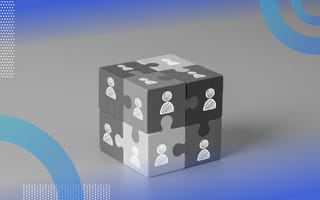Human capital management (HCM) enable a company to have the right people with the right skills, while effectively managing workforce productivity and engagement. These functions include workforce planning, recruiting, onboarding, learning and development, compensation and benefits, compliance, and performance management.
Why Is Human Capital Management Important?
Human capital management is important because it supports the growth of both the company and its employees. Strong HCM enables employees to grow as professionals, succeed in their role and add value to the company. HCM also fuels employee engagement while positively impacting employee experience and retention.
What Are Human Capital Management Examples?
- Workforce Planning
- Recruiting
- Onboarding
- Learning and development
- Compensation and benefits
- Compliance
- Performance management
Common Human Capital Management Tools
HCM software companies offer all-in-one solutions for companies to manage most, if not all, of their HCM functions in one platform. Some of these companies include Workday, ADP, Oracle HCM and Paycor. These platforms typically have features that allow an HR team to manage payroll and benefits, onboarding, time management, performance reviews and other HCM functions. However, it’s still good for companies to consider looking at specialized software, such as applicant tracking systems and performance management platforms depending on their needs.
What Are the Functions of Human Capital Management?
Workforce Planning
Workforce planning allows organizations to uncover the gap between the current capacity of employees and the future needs of a company to support the organization’s growth and success. This analytical process is critical to creating a workforce strategy that will enable a company to accomplish its mission and goals.
Recruiting
Recruiting is a function in which prospective candidates are sourced, interviewed and assessed in order to identify the best fit for a job opening. Identifying who will be hired is typically based on required skills, relevant background and whether or not the person is culturally additive to the organization.
Onboarding
Onboarding ensures that new hires successfully transition to the company. When new employees onboard, they’re provided a more in-depth understanding of the company along with its product and/or services. These new employees are also onboarded with their team by becoming familiar with the tools, processes, teams and resources to which they have access in order to succeed in their role.
Learning and Development
Learning and development is a function that supports the growth and career development of employees by providing learning resources, training and education. This function assesses the learning and development needs of a workforce and bridges skill gaps through various training and education programs.
Compensation and Benefits
Compensation and benefits include direct pay (salary, wages, bonuses), benefits and perks that employees receive from their employer. Total rewards is a part of HCM typically managed by the people operations (or HR operations) function within HR. These total rewards are managed through payroll, benefits administration and relevant financial documentation. The people ops function also performs compensation analysis to ensure a company’s total rewards are fair, competitive and equitable.
Compliance
Compliance refers to keeping track of federal, state and local regulations as well as any changes relevant to the organization to ensure a company adheres to applicable labor laws. Depending on any updates in regulations based on region or country, it's important for an HR team to implement legally mandated changes and conduct training as needed in order to stay compliant.
Performance Management
Performance management is an ongoing process that optimizes employee performance by setting role expectations and goals that are aligned with a company’s strategy, and then tracking employee progress and performance. This process allows managers to identify opportunities to reward, develop or coach employees as needed.
Human Capital Management vs. HR vs. HRM: What’s the Difference?
Human resources (HR) is the overarching company department that houses a team of people who specialize in managing the resources and tools that employees need to be successful in their roles. There is a lot more overlap when comparing HCM and HRM and the difference is nuanced. Through human capital management (HCM) functions, an HR team can focus on enabling the current performance and future potential of employees so they are able to grow and add increasing value to the organization. On the other hand, human resource management (HRM) focuses on ensuring employees can perform their jobs effectively day-to-day.





